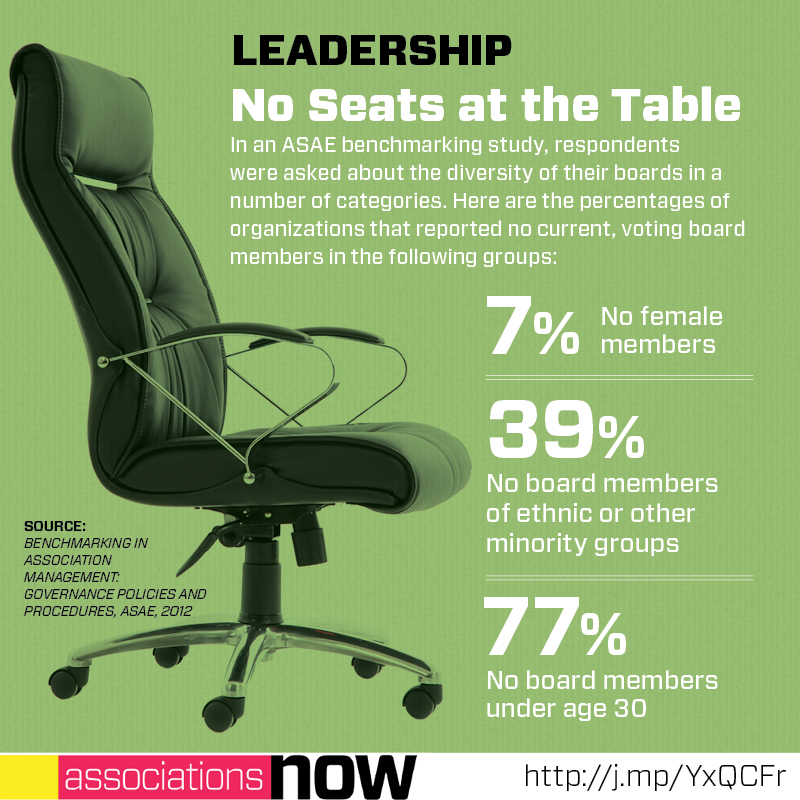
Associations’ Board Diversity Challenge
The numbers don't look good when it comes to inclusion in association governance. But numbers alone aren't the issue.
This is the opening paragraph of a blog post about diversity in associations. The deliberately bland and self-aware style in which this paragraph is written is intentional. It has been carefully crafted to accomplish two things. First, it means to acknowledge that this is a subject that may feel well-worn and perhaps frustrating. Second, it means to stress that while this post will include a reminder of the depth of the problem and note what seems to be a reasonable way of addressing it, it will avoid rhetoric feints and tone that imply you’ve failed to recognize the problem’s urgency—and, thus, having made you feel condescended to, prompt you to stop reading.
You want diversity on your board because you want your board disrupted. But you also want boards with a cohesive atmosphere.
Or is all that business up there just a way to distance myself from the issue? I’ve served at nonprofits that are less diverse than they could be; I work for an organization that makes diversity a priority but doesn’t pretend it’s figured it out. A recent article suggests that building diversity into nonprofits requires a considered, strategic approach (something I tried to encapsulate in that clinical, passive-voice first paragraph) that blends in relationship-building (which I’ve tried to characterize in this chummier, first-person paragraph). First, though, the numbers. Here’s what ASAE research reveals about a few categories of board diversity:

That’s just the tip of the iceberg: The research also shows that only 19 percent of associations have a written diversity policy for board members, and that the lack of ethnic diversity is more pronounced at smaller organizations and trade associations.
But if we know anything about diversity, we know that numbers aren’t everything. In their article “The Inclusive Nonprofit Boardroom,” Patricia Bradshaw and Christopher Fredette write that board-building by numbers represents what they call “functional inclusion,” which is “goal-driven and purposeful strategies for the increased inclusion of members of diverse or traditionally marginalized communities.” That’s a noble goal, they explain, but it’s not a successful diversity strategy in itself. Functional inclusion demands pairing with what they call “social inclusion,” which means “the participation of members of diverse groups in the interpersonal dynamics and cultural fabric of the board, based on meaningful relational connections.”
In other words, you want diversity on your board because you want your board disrupted: Smart governance means paying attention to new and important ideas you otherwise might not consider. But you also want boards with a cohesive atmosphere that doesn’t treat certain board members simply as repositories of disruptive contributions.
As ever, striking that balance is easier said than done. So as you continue your work on that front, how do you cultivate what Bradshaw and Fredette call that “transformational inclusion” that combines those two perceptions of diversity? Or is looking at diversity in such a binary way too simplistic?
(George Doyle/Stockbyte/Thinkstock)






Comments